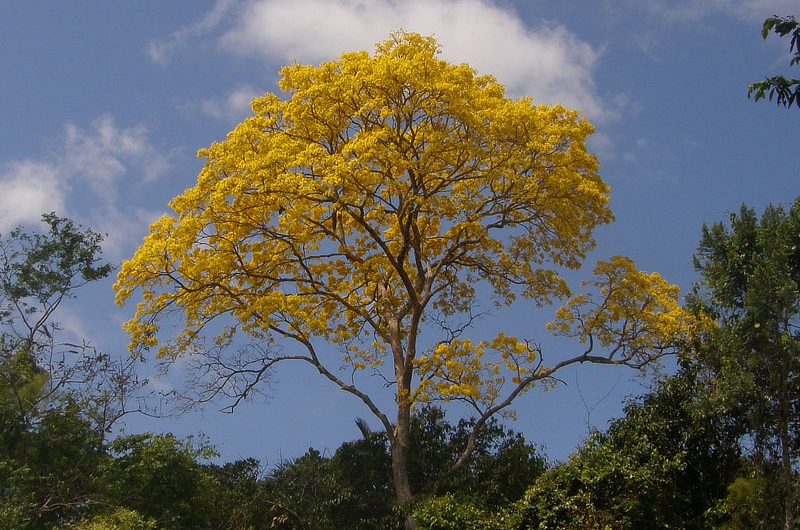Guayacan Trumpet Tree
Tabebuia guayacan
Every March, the forestscape bursts with color as the Guayacan trees start to bloom, producing a full crown of golden, tubular-shaped flowers. It is believed by locals that the Yellow Tabebuia Tree presages the coming green season—they are said to bloom one month before the rains start. This large tree, up to 50 meters tall, is native to Central and South America. It sheds its leaves during the dry season, then flowers before leafing out again. The flowering period for each individual tree is abrupt and very short; flowers drop after only 1 or 2 days. After flowering, it bears fruit at the end of March—fruits are 25-60 cm long, green and resemble bean pods. Inside the fruits are small, winged seeds. The wood is very hard, heavy and dark; it is valued and used for making railway ties, flooring and boats. Furthermore, this tree also has medicinal properties. A tea made from the leaves can provide relief for urinary tract and kidney problems, and is a treatment for tuberculosis. It is found from Mexico to Colombia, Venezuela and Peru. It is most common in Costa Rica and Panama, and during this month while blooming, dazzles guests from the Canopy Tower observation deck just as much as the birds do!

